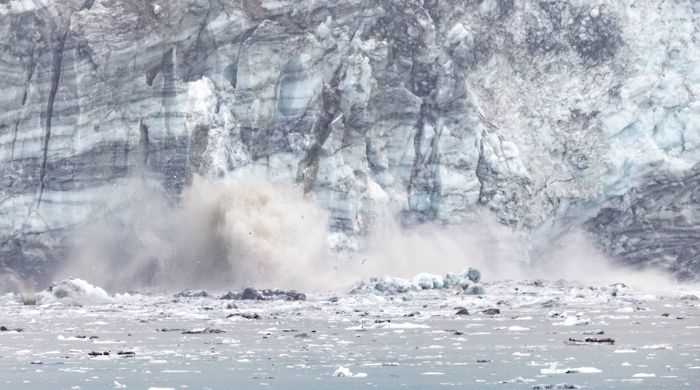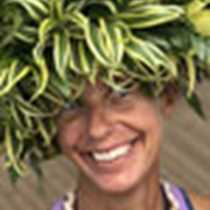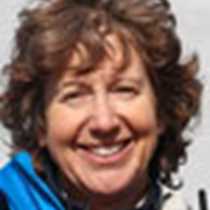This morning, National Geographic Quest awoke in the deep reaches of Glacier Bay National Park. Heavy on the atmosphere, the forecast for the week finally delivered. On approach to Russell Cut we encountered a brown bear in the mist that was fishing in a small stream. In 1879, when preservationist John Muir stood on top of nearby Russell Island, there was no stream or bears in this area, as this is where the terminus of the great glacier that carved this fjord once sat. Muir arrived here in October with four Tlingit people who paddled him some 200 miles in their 35’ canoe. His objective was to prove that Yosemite (where he spent so many years) had been carved over millions of years by glacial ice vs sudden geological forces. Muir climbed Russell Island for a vantage point, and got his first look at what he knew was a force that had truly helped shape Yosemite, Alaska, and different parts of the world.
From Russell Cut and Island, we made our way up Tarr Inlet towards Margerie Glacier. Hard to see on approach, we enjoyed the comforts of the lounge until Cindy assured us there was a glacier ahead. Out on the bow, the glacier came into view and we could hear the rumblings of its dynamic nature of advance and retreat. The nearby Grand Pacific Glacier, while discrete in its rock-covered appearance, is the glacier most responsible for carving this amazing bay.
Further back down the fjord we explored Johns Hopkins Glacier, one of the few glaciers in Alaska that has held its own while most glaciers are receding. Still sitting on its moraine, this glacier is protected from the erosive nature of the warm (39 degree) water that eats away at the deepest extent of glacial ice. Harbor seals rested on recently calved ice, while black legged kittiwakes foraged for zooplankton and fish stunned by falling ice. After leaving Johns Hopkins Inlet, we passed by Lamplugh and Reid Glaciers en route to Geike Inlet. Looking for the elusive blue/grey glacier bear in Geike the 20+ knot winds felt like we were in the Southern Ocean.
Passing by Gloomy Knob, we spotted a few mountain goats. The finale of the day was at South Marble Island, where we saw an incredible amount of Steller sea lions, tufted puffins and a few sea otters.
Today really lived up to the reputation and mystique of Southeast Alaska being a wet and wild place.









